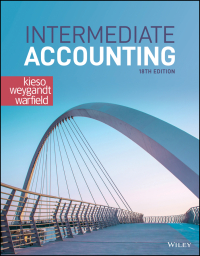Help with 8 c,d, and number 9, please! will give great review
b) The company anticipates the standard direct labor hour will be 0.85 hours per finished good. this is slightly lower than their previous actual average (0.90) because management expects more efficiency given employee experience, etc. 19,000*.85=16,150 hours c) Overhead costs are expected to increase 2.5% due to inflation. Calculate the new variable overhead standard as 2.5% higher that their most current actual rate (AR calculated in 4s above). Include the amount in the highlighted square in the NEXT YEAR standard cost card. d) Calculate budgeted fixed overhead as 2.5% higher than the previous year's actual. (connect). You will use this amount in the budgeted income statement below. 9) Next Year's cost card. Use your calculations from 7 and 8 to complete the cost card below. Calculating the Standard cost per Unit" (a) for NEXT YEAR's standard cost card (multiply quantity times cost). Make sure to use your calculations from above for direct materials quantity, direct materials cost of input, direct labor cost of input and variable overhead cost per input Phoenix Company Standard Cost Card - Next Year (2020) Qty per Cost per Std. Cost per Unit Input Unit Direct materials X Direct labor 0.85 hrs. Variable Overhead 0.85 hrs. Xb. The production supervisor is implementing some changes to production that are expected to improve the materials quantity variance. With these changes, the supervisor believes that their unfavorable quantity variance would have been only half(50%) what it was. HINT: Use MQV = (SQ-AQ)SP; Set MQV to 50% of the quantity variance from 2c. Use the AQ and SP from 2c and solve for Actual Quantity to achieve the desired variance. This will be total quantity of raw material. Divide this quantity by the number of nished goods units produced/sold to express this as POUNDS PER UNIT (ONE UNIT) of nished goods\". Management wants to use this as their new standard for next year. Include this in the standard cost card below for the M square. 1. Desired MQV=MQV / 2 = 16000 / 2 = 8000 2. Desired AQ*SP. 1140000-8000= 1 13200 3. 1 132000/15=75466.6666 4. 75466.6666/19000= 3.97 Lbs. perunit 8) In the past few years, Phoenix Company has made many changes to their factory production process and have also experienced signicant employee turnover. Management believes that operations have been more stable in the most recent year and are representative of future operations. Because of this expected stability, management is proposing standards for direct labor be based on the most current results (Actual quantities and rates from in 3a and 3c). a) A 3% wage increase has been authorized for all direct labor employees. Add the 3% increase to the ACTUAL average labor rate from Be. This will be the new standard labor rate. Include the amount in the highlighted square in the NEXT YEAR standard cost card. 19,000*.9= 17,100 hours 293,000/17100= 17.13 17.13*1.03=17.64 b) The company anticipates the standard direct labor hour will be 0.85 hours per nished good. this is slightly lower than their previous actual average (0.90) because management expects more efciency given employee experience, etc. 19,000*.85=16,150 hours a. Management believes the lower priced material has contributed to the unfavorable material quantity variance. The purchasing department wants to know what price per pound of raw material they should pay to fully offset the unfavorable material quantity variance they saw last year. Calculate the price. Hint Use MPV = (SP AP)AQ; Set material price variance to favorable (positive) amount equal to the quantity variance calculated in 20. Use the SP from standard cost card in 1 and actual quantity of raw material and solve for AP, actual price). Management would like to set this as their standard raw material price per input for next year. Include the amount in NEXT YEAR'S standard cost card below in the highlighted cell. Make sure you show your calculations for partial credit. Note If your quantity variance is also favorable, please contact your instructor for guidance. 16,000=1,140,00019,000AP 19000AP=1,140,00016000 19000AP=1,124,000 1,124,000/19,000= $59.16









